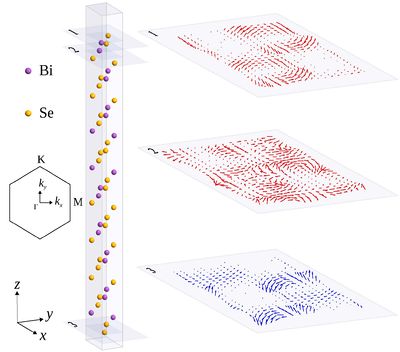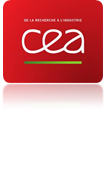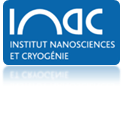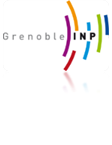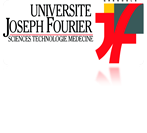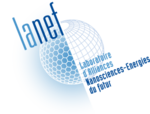Main Page: Difference between revisions
No edit summary |
No edit summary |
||
| (43 intermediate revisions by 2 users not shown) | |||
| Line 5: | Line 5: | ||
|- | |- | ||
|style="width:280px;text-align:center;white-space:nowrap;color:#000" | | |style="width:280px;text-align:center;white-space:nowrap;color:#000" | | ||
<div style="font-size:160%;border:none;margin: 0;padding:.1em;color:#000"> [[Image:CPTGA.png|left|100px]] Workshop on Topological Spintronics | <div style="font-size:160%;border:none;margin: 0;padding:.1em;color:#000"> [[Image:CPTGA.png|left|100px]] '''Workshop on Topological Spintronics & Skyrmionics''' </div> | ||
<div style="font-size:160%;border:none;margin: 0;padding:.1em;color:#000"> October 5-7, 2015 </div> | |||
<div style="font-size:160%;border:none;margin: 0;padding:.1em;color:#000"> CNRS Grenoble, France </div> | |||
|}<!-- Portals Follow --> | |}<!-- Portals Follow --> | ||
| Line 14: | Line 16: | ||
*[[Abstracts|Abstracts]] | *[[Abstracts|Abstracts]] | ||
*[[Posters|Posters]] | *[[Posters|Posters]] | ||
*[[Information|Information]] | *[[Practical Information|Practical Information]] | ||
|}<!-- End Portals --> | |}<!-- End Portals --> | ||
{|style="width:100%;background:none;margin:-.8em 0 -.7em 0" | {|style="width:100%;background:none;margin:-.8em 0 -.7em 0" | ||
|style="font-size:95%;text-align:left;white-space:nowrap;color:#000"| [http://lpsc.in2p3.fr/schien/CPTGA/cptga.html Centre de Physique Théorique de Grenoble-Alpes] | |style="font-size:95%;text-align:left;white-space:nowrap;color:#000"| [http://lpsc.in2p3.fr/schien/CPTGA/cptga.html Centre de Physique Théorique de Grenoble-Alpes] '''·''' [http://www.spintec.fr/ Spintec] '''·''' [http://www.grenoble.cnrs.fr/ CNRS Grenoble] '''·''' [http://www.cea.fr/le-cea/les-centres-cea/grenoble CEA Grenoble] | ||
|style="font-size:95%;padding:10px 0;margin:0px;text-align:right;white-space:nowrap;color:#000"| [[Help:Contents|Help]] '''·''' [http://en.wikibooks.org/wiki/LaTeX WikiLaTeX] '''·''' [[Special:Categories|Categories]] '''·''' [[Special:Newimages|Media]] '''·''' [[Special:Allpages|A–Z index]] | |style="font-size:95%;padding:10px 0;margin:0px;text-align:right;white-space:nowrap;color:#000"| [[Help:Contents|Help]] '''·''' [http://en.wikibooks.org/wiki/LaTeX WikiLaTeX] '''·''' [[Special:Categories|Categories]] '''·''' [[Special:Newimages|Media]] '''·''' [[Special:Allpages|A–Z index]] | ||
|} | |} | ||
| Line 26: | Line 28: | ||
! <h2 style="margin:0;background-color:#cef2e0;font-size:120%;font-weight:bold;border:1px solid #a3bfb1;text-align:left;color:#000;padding:0.2em 0.4em;"> Scope and Objectives</h2> | ! <h2 style="margin:0;background-color:#cef2e0;font-size:120%;font-weight:bold;border:1px solid #a3bfb1;text-align:left;color:#000;padding:0.2em 0.4em;"> Scope and Objectives</h2> | ||
|- | |- | ||
|style="color:#000"|[[Image:ee_ti.jpg|left|400px]] | |style="color:#000"|[[Image:ee_ti.jpg|left|400px]] | ||
Spintronics explores phenomena intertwining electronic charge and spin. The ability of spintronics to re-energize itself in directions that germinate new subfields has made it one of the most fertile grounds for basic research aimed at future applications. One of the burgeoning areas of next-generation spintronics exploits relativistic effects in nonmagnetic materials know as spin-orbit coupling (SOC) to generate, detect or exploit spin-polarized or pure spin currents. Strong surface and bulk SOC can be introduced into spintronic heterostructures using recently discovered [http://dx.doi.org/10.1103/RevModPhys.82.3045 topological insulator] (TI) materials. They possess a usual band gap in the bulk while also hosting metallic surfaces whose low-energy quasiparticles behave as massless Dirac fermions with spins locked to their momenta. The SOC can also give rise to strong Dzyaloshinskii-Moriya interaction (DMI) which competes with conventional exchange interaction to create chiral domain walls or [http://www.nature.com/nnano/journal/v8/n3/full/nnano.2013.29.html skyrmions] as swirling spin textures characterized by nanoscale size, topological stability against defects and impurities, and gyro-dynamics analogous to that of a charged particle under magnetic field. In this workshop, we bring together experimentalists and theorists to review the current status of emerging phenomena where topology of skyrmions in real space or topology of Dirac electrons in ''k''-space, as well as their interplay, can be exploited for novel ultralow power memory and logic device that can potentially solve the heating and scaling issues associated with the conventional CMOS technology. | |||
|}<!-- Start of right-column --> | |}<!-- Start of right-column --> | ||
|class="MainPageBG" style="width:45%;border:1px solid ##FFE680;background-color:#FFF2BF;vertical-align:top;color:#000"| | |class="MainPageBG" style="width:45%;border:1px solid ##FFE680;background-color:#FFF2BF;vertical-align:top;color:#000"| | ||
| Line 42: | Line 37: | ||
|- | |- | ||
|style="color:#000"|{{News}} | |style="color:#000"|{{News}} | ||
|- | |||
! <h2 style="margin:0;background:#FFE680;font-size:120%;font-weight:bold;border:1px solid #a3b0bf;text-align:left;color:#000;padding:0.2em 0.4em;">Organizers</h2> | |||
|- | |||
|style="color:#000"|{{Organizers}} | |||
|- | |- | ||
! <h2 style="margin:0;background:#FFE680;font-size:120%;font-weight:bold;border:1px solid #a3b0bf;text-align:left;color:#000;padding:0.2em 0.4em;">Format</h2> | ! <h2 style="margin:0;background:#FFE680;font-size:120%;font-weight:bold;border:1px solid #a3b0bf;text-align:left;color:#000;padding:0.2em 0.4em;">Format</h2> | ||
|- | |- | ||
|style="color:#000"|{{Format}} | |style="color:#000"|{{Format}} | ||
|- | |- | ||
! <h2 style="margin:0;background:#FFE680;font-size:120%;font-weight:bold;border:1px solid #a3b0bf;text-align:left;color:#000;padding:0.2em 0.4em;">Registration and Fees</h2> | ! <h2 style="margin:0;background:#FFE680;font-size:120%;font-weight:bold;border:1px solid #a3b0bf;text-align:left;color:#000;padding:0.2em 0.4em;">Registration and Fees</h2> | ||
| Line 58: | Line 53: | ||
|} | |} | ||
'''SPONSORS:''' | '''SPONSORS:''' [[Image:Spintec.png|200px|link=http://www.spintec.fr]] [[Image:CNRS.png|link=http://www.alpes.cnrs.fr/]] [[Image:CEA.png|link=http://www.cea.fr/le-cea/les-centres-cea/grenoble]] [[Image:INAC.png|link=http://inac.cea.fr/en/]] [[Image:INPG.png|link=http://www.grenoble-inp.fr/welcome/]] [[Image:UJF.png|link=https://www.ujf-grenoble.fr/?language=en]] [[Image:SPSMS_RVB.jpg|100px|link=http://inac.cea.fr/en/Phocea/Vie_des_labos/Ast/ast_service.php?id_unit=143]] [[Image:nanosciences-logo-trans.png|150px|link=http://www.fondation-nanosciences.fr/RTRA/en/1/homepage.html]] [[Image:logo-lanef.png|150px|link=http://www.grenoble-lanef.fr/]] [[Image:spot.jpg|150px|link=http://www.spot-research.eu]] | ||
__NOTOC__ __NOEDITSECTION__ | __NOTOC__ __NOEDITSECTION__ | ||
Latest revision as of 17:28, 4 October 2015
|
| Centre de Physique Théorique de Grenoble-Alpes · Spintec · CNRS Grenoble · CEA Grenoble | Help · WikiLaTeX · Categories · Media · A–Z index |
|
|

